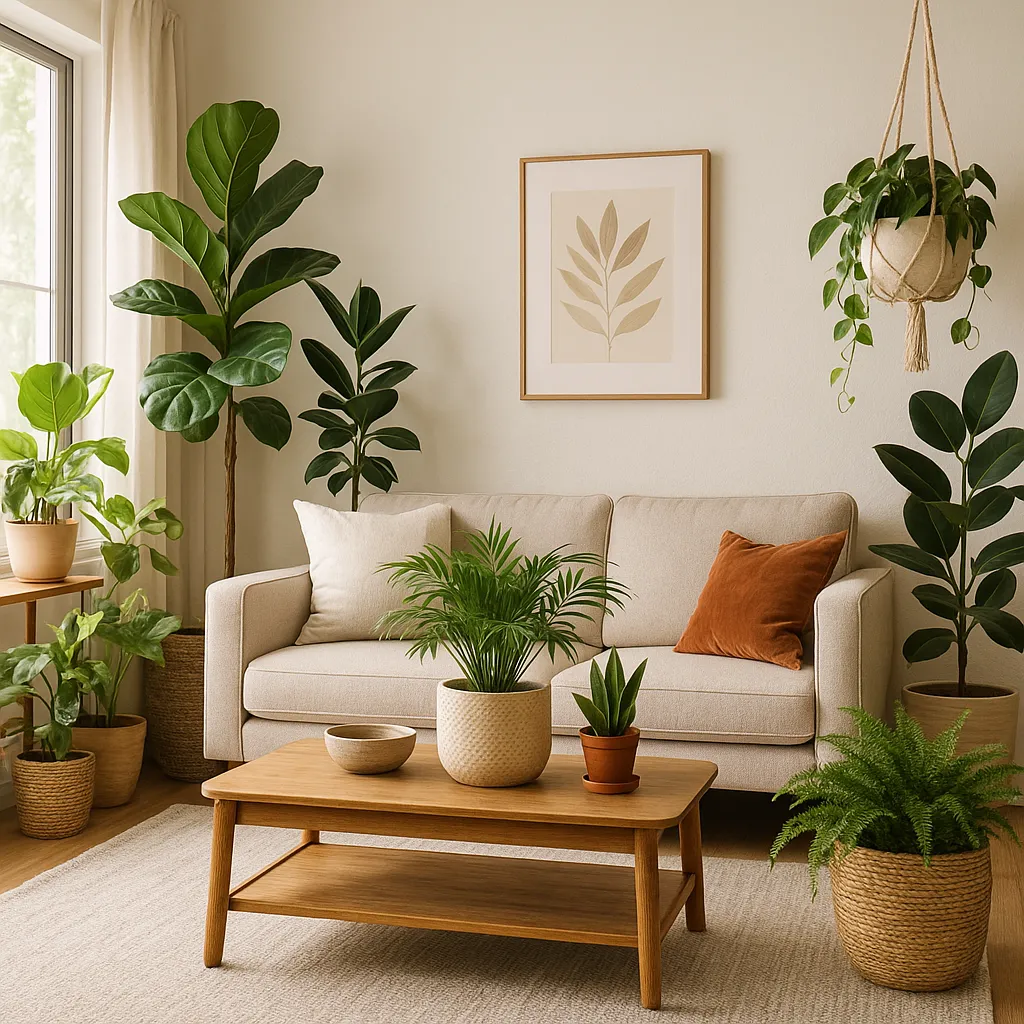Decorating with plants is one of the most effective ways to bring freshness, warmth, and vibrancy into your home. Indoor greenery not only enhances the aesthetic appeal of your space but also improves air quality and supports mental well-being. Whether you live in a small apartment or a spacious house, plants can fit into any design style—from modern minimalism to cozy boho. In this guide, you’ll learn how to decorate with plants effectively, even if you’re just starting out.
Understand Your Space Before Choosing Plants
Before buying plants, it’s essential to evaluate the light, temperature, and humidity of your rooms. Not all plants thrive in the same conditions.
Questions to Ask:
- How much natural light does the space receive?
- Is the room warm and humid or cool and dry?
- Is there enough space for floor plants or just shelves?
This evaluation helps you select plants that will not only survive but thrive in your home environment.
Choose the Right Plants for Each Room
Different plants suit different rooms based on their light needs and your lifestyle. Here are some great options for key areas of the home:
Living Room:
- Fiddle Leaf Fig: Large and dramatic, perfect for a corner.
- Rubber Plant: Glossy leaves and low maintenance.
- Pothos or Philodendron: Great for hanging or trailing over shelves.
Kitchen:
- Herbs (basil, mint, rosemary): Practical and decorative.
- Spider Plant: Easy to care for and great for filtering air.
- Aloe Vera: Useful for minor burns and thrives in sunlight.
Bedroom:
- Snake Plant: Improves air quality, tolerates low light.
- Peace Lily: Elegant, low light, and blooms indoors.
- Lavender: Adds fragrance and aids relaxation.
Bathroom:
- Boston Fern: Loves humidity and indirect light.
- ZZ Plant: Tolerates low light and neglect.
- Orchids: Elegant and suited for steamy environments.
Choosing based on placement ensures you get healthy, thriving greenery in every room.
Use Plants as Design Features
Plants are more than just accessories—they can serve as focal points, room dividers, or visual anchors in your design. Their natural forms and textures soften hard lines and bring life to sterile spaces.
Creative Ideas:
- Use a large potted plant to fill an empty corner.
- Place a row of identical plants along a shelf or windowsill.
- Use hanging planters in a reading nook or above a kitchen island.
- Position tall plants near furniture to visually anchor the area.
Mix plant heights and pot styles for dynamic arrangements that add depth and movement to the room.
Choose Stylish Planters and Stands
The containers you choose are just as important as the plants themselves. Planters and stands help complement your decor style and elevate your plant’s visual impact.
Style Suggestions:
- Boho or Eclectic: Woven baskets, macramé hangers, and colorful ceramic pots.
- Minimalist: White or neutral-tone pots with clean lines.
- Industrial: Metal or concrete planters.
- Modern Scandinavian: Wooden stands and matte ceramic containers.
Make sure your planters have drainage holes or use a cachepot to hide nursery containers inside.
Incorporate Vertical and Wall-Mounted Plant Displays
When floor space is limited, go vertical. Wall-mounted and hanging plants create a lush, garden-like effect without cluttering surfaces.
Vertical Ideas:
- Install floating shelves to hold small pots or trailing plants.
- Use a wall-mounted pocket planter system.
- Hang macramé planters near windows.
- Create a living wall with multiple mounted pots or frames.
These options are especially useful in apartments and small rooms.
Group Plants by Light and Water Needs
Grouping plants with similar care requirements makes your plant care routine easier and more efficient.
Grouping Tips:
- Cluster sun-loving plants together in bright rooms.
- Place humidity-loving plants in bathrooms or near humidifiers.
- Watering is simpler when plants in the same area have the same schedule.
This approach also makes plant styling more cohesive and helps prevent overwatering.
Add Plants to Unexpected Places
Don’t limit yourself to windows and floors. Plants can bring charm to overlooked areas of your home.
Try Adding Plants to:
- Bookshelves and nightstands.
- Bathroom counters or shower ledges.
- Kitchen cabinets or open shelves.
- Entryway tables or stairwells.
Even a small succulent in a decorative pot can bring personality to a corner or tabletop.
Use Plants to Highlight Architecture and Decor
Strategically placed plants can emphasize your home’s features or enhance existing decor.
Examples:
- Place a tall plant next to a fireplace or window to draw the eye upward.
- Use trailing plants to soften the edge of a bookshelf.
- Frame a mirror or artwork with small potted plants for visual balance.
This technique reinforces the design flow and adds dimension.
Maintain Your Plants to Keep the Look Fresh
Healthy plants are the key to beautiful decor. Regular maintenance not only helps your plants thrive but also keeps your space looking clean and polished.
Maintenance Basics:
- Check soil moisture weekly and adjust watering as needed.
- Remove dead leaves and dust foliage.
- Rotate plants regularly for even growth.
- Repot when roots outgrow the container.
Choose low-maintenance varieties if you’re new to plant care or have a busy lifestyle.
Final Thoughts: Nature as a Design Partner
Decorating with plants is one of the easiest ways to make your home feel alive, relaxing, and truly personal. From small succulents to statement fiddle leaf figs, greenery enhances any interior by connecting us with nature.
Start small, experiment with placement and combinations, and choose varieties that suit your environment and habits. With time, your home will bloom with color, texture, and natural beauty—turning ordinary rooms into thriving, tranquil sanctuaries.
